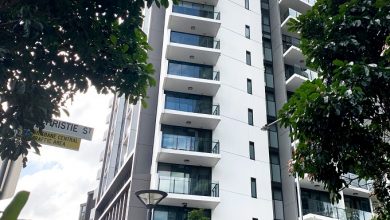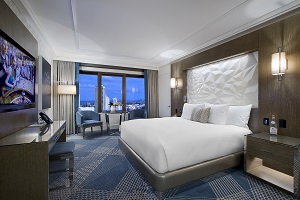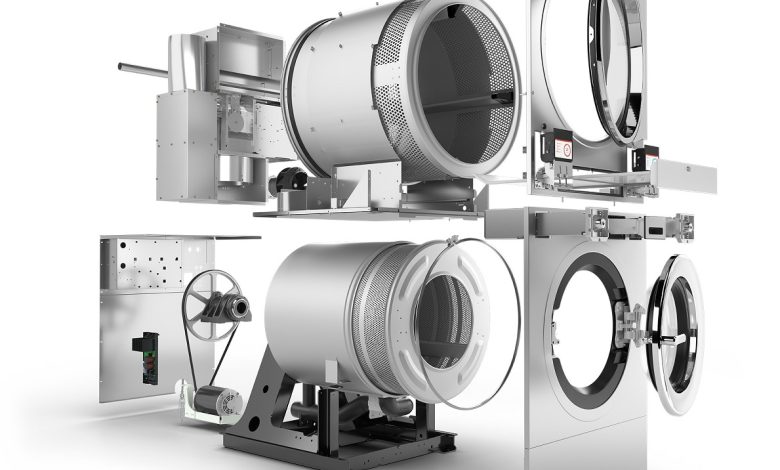
Space-saving innovations in laundry equipment
What are the current trends and space-saving designs solutions for accommodation providers looking to offer laundry facilities?
For both employees and guests, a functional laundry space is an essential amenity. However, space can often be limited, making it a challenge for operators to offer laundry facilities without sacrificing valuable floor space.
In this article, we look at the current trends and space-saving designs that may provide a solution for accommodation providers looking to offer laundry facilities while maximising their use of limited space.
Latest trends
Speed Queen Equipment Sales Manager Duncan Gardiner said he had seen a shift in the hospitality sector towards in-house laundry facilities.
“We are seeing more and more hospitality organisations who previously outsourced all their laundry, either bring it in-house to enjoy up to 30 percent savings, or implement partial laundry operations,” he said.
“Partial laundries achieve two things for them – continuity of clean linen if their supplier lets them down and also maintaining some price and performance pressure on their outsourced supplier (“put your price up too much or perform poorly and we will extend our in-house laundry”)”.
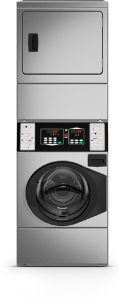
Veeco Laundry Systems Manager Bill van der Leest said the current hospitality trend towards sustainability was reflected in laundry, with a current focus on energy efficiency and water consumption.
“By the use of the latest innovations in electronic controllers and motor design controlled by inverters, more sophisticated and efficient wash formulas can be created,” he said.
“Also, the use of ‘soft mount’ washers with High-Speed final extraction in larger laundries greatly enhances water removal at the end of the wash formula; the less water contained in the extracted linen the less time is needed in the dryer which makes complete economic sense given the high cost of gas and electrical energy used in the drying process.”
Mr van der Leest added that the use of ‘Smart Programming’ for wash formulas creates more effective cleaning processes while using much less water.
Particularly for larger hospitality venues, Mr van der Leest said OZONE dosing units remained a popular choice for washers.
“In larger venues, exponential water savings can be achieved by adding OZONE dosing units that automatically add Ozone to the wash water during the wash cycle,” he said.
“Savings of up to 50 percent of water consumption, when compared to standard washing formulas, is achievable. This is becoming more and more important, especially where water costs are very high.”
Finally, Mr van der Leest cautioned accommodation operators to consider upgrading their laundry equipment as a matter of safety.
“While not common, dryer fires are a very real risk and the most common cause of fires in laundries through spontaneous combustion,” Mr van der Leest said.
“This kind of fire is more prevalent in older dryers where the ‘cooldown’ feature that should automatically introduce fresh air to the dryer to cool the linen down prior to terminating the programme, is not functioning.
“Most modern dryers have automatic cooldown steps as part of the programming, however, more importantly they can be optioned with built-in fire suppression systems that automatically trigger when the temperature inside the dryer reaches an unsafe level.”
“Insurance companies are now becoming more aware of this feature with laundry dryers and starting to include it as a requirement of compliance for the insured party.”
Space saving
When it comes to laundries in hospitality and tourism settings, space-saving is always the greatest concern, and making the most out of your available space is essential.
Mr Gardiner said stack washer and dryer combinations had proven a popular concept for many years for their space-saving ability.
“Stacked laundry equipment is the ultimate space saver. Making use of vertical space to save on floor space minimises the area required for your laundry,” he said.
“Additionally, having the correct size and mix of washing machines and dryers to match your requirements can save you not only space, but time and energy.”
Mr van der Leest said a number of industries used stack washer and dryer combinations to meet high demand.
“Stack combinations have been around for quite a few years and are extensively used in the hospitality industry, caravan parks, laundromats, the mining industry and many institutional settings,” he said.
“Until recently there has been weight limits for stack washers and dryers, however a new model is now available with the washer and top-mounted dryer both having a capacity of 23 kg each.”
“This now opens up opportunities for ‘on premise laundries’ such as small hotels and motels with limited space where they can now purchase more appropriately sized equipment that better fits their limited space and gets the laundry done much faster and with greater efficiency.”
Future trends
Like all facets of the hospitality industry, technological advances are constantly changing guest expectations.
Mr van der Leest said the clearest indicator of changing expectations in laundry was the movement away from coin-operated equipment.
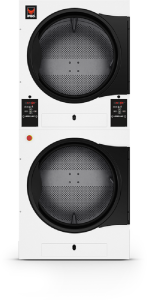
“There is currently a strong trend towards ‘cashless’ payment methods with quite a few companies offering systems that facilitate this method of payment,” he said.
“Usually the washers and dryers need to be fairly up-to-date to facilitate the retrofitting of cashless devices but the benefits are significant.”
Mr van der Leest said that cashless devices see a significant reduction in damage from attempted coin theft. Cashless laundry systems also result in increased guest spend by removing the reliance on ever-scarcer gold coins.
Additionally, new technology is allowing equipment to become more accessible, with some models allowing users to change the settings to display instructions in their own language.
Mr Gardiner said the future is bright for laundry equipment, with trends moving towards cloud-based technology.
“Laundry is increasingly becoming more cloud-based and connected,” he said.
“As technology continues to improve the remote features and reporting capabilities of laundry equipment will become even more impressive.
“Features such as remote start and machine management and reporting features including error reports and machine auditing have already been introduced with many more exciting features to follow in the coming years.”
Sarah is a freelance journalist with experience across print, digital and audio. After working for Multimedia Publishing as a contributing writer, she has recently joined the team in a part-time capacity for School News AU and AccomNews.

